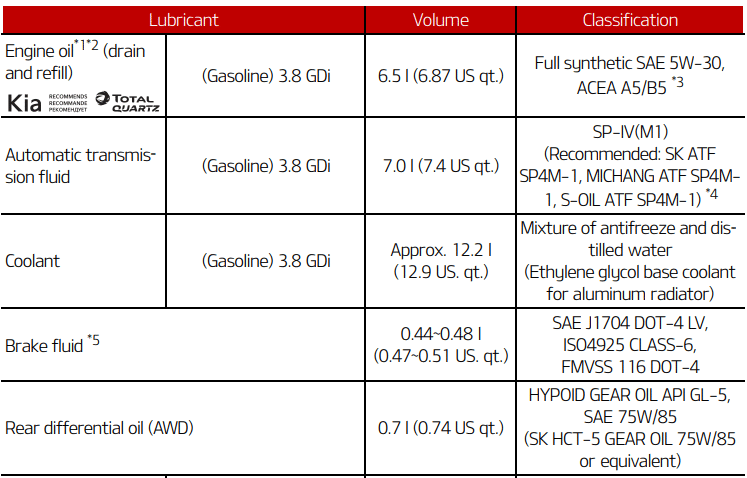The Kia Telluride, a stalwart in the mid-size SUV category, combines a blend of style, comfort, and performance. Its sophisticated transmission system is at the heart of this performance, designed to ensure smooth gear shifts, optimal fuel efficiency, and a responsive driving experience.
Whether you’re embarking on city drives or venturing off-road, the Telluride’s transmission works tirelessly behind the scenes, making every journey seamless.
To ensure that Telluride’s transmission continues to operate flawlessly, one cannot overlook the importance of proper transmission fluid maintenance. Much like the lifeblood of this system, the transmission fluid lubricates, cools, and cleans, preventing wear and tear while ensuring optimal performance.

Regularly checking and replacing the fluid can extend the life of your transmission, leading to fewer costly repairs and a prolonged lifespan for your Telluride.
Understanding Transmission Fluid
Transmission fluid is more than just a lubricant; it’s a specialized liquid tailored for the intricate workings of a vehicle’s transmission system. This fluid acts as a medium for power transmission, ensuring that every component within the system operates harmoniously.
Over time, with the constant stress of shifting gears and varying driving conditions, the fluid can degrade, losing its essential properties.
Selecting the appropriate fluid type for the Kia Telluride is not just a matter of ticking boxes; it’s pivotal for the longevity and efficiency of your SUV’s transmission. Using the wrong fluid type can lead to increased friction, inefficient power transfer, and, in some cases, irreversible damage.
Given Telluride’s specific transmission design and requirements, adhering to manufacturer recommendations is more than just good practice—it’s a necessity.
2020-Now Kia Telluride Transmission Fluid Capacity And Transmission Fluid Type
The Kia Telluride, with its sleek design and powerful performance, requires specific amounts of transmission fluid to ensure optimal function. Different versions might have slight variations, so always refer to your owner’s manual for precise measurements.

Kia Telluride (All Versions): The transmission fluid capacity for the 8-speed A8LF1 automatic transmission is approximately 7.4 quarts (7 liters). This amount is for a total fill. If you’re only doing a partial change (e.g., not draining the torque converter), the required amount might be less.
Every vehicle model, especially those as advanced as the Kia Telluride, has specific requirements when it comes to transmission fluid. The Telluride, with its unique design and engineering, is no exception. The manufacturer’s specifications are there to ensure the transmission system functions at its best, offering drivers a seamless experience.
The recommended transmission fluid for all variants of the Kia Telluride is the SP-IV(M1). This specialized fluid is designed to work perfectly with Telluride’s transmission system, ensuring optimal performance and longevity.
Risks of Using the Incorrect Fluid Type
Just as the right transmission fluid can significantly boost the performance and lifespan of your Kia Telluride, the wrong one can cause a myriad of issues:
- Decreased Performance: The incorrect fluid might not provide the necessary lubrication or possess the right properties for power transmission, leading to rough shifting and reduced fuel efficiency.
- Increased Wear and Tear: Inappropriate fluids can increase friction within the transmission system, accelerating wear and tear on gears and other vital components.
- Potential Damage: In worst-case scenarios, using the wrong fluid can lead to significant and sometimes irreparable damage to the transmission system. This not only affects the vehicle’s performance but can also result in expensive repairs.
- Void Warranty: Utilizing non-recommended fluids might void any existing warranties on your Kia Telluride, leaving you without coverage for potential future issues.
Guide on Checking Transmission Fluid Levels
- Prepare the Vehicle: Park your Kia Telluride on a level surface and start the engine. Allow it to run for a few minutes to reach its normal operating temperature.
- Locate the Dipstick: The transmission fluid dipstick is typically marked with a red or yellow handle. It’s usually situated towards the back of the engine bay.
- Check Fluid Level: Pull out the dipstick, wipe it clean with a lint-free cloth, and then re-insert it fully. Pull it out again and check the level. There are typically two markings on the dipstick: “HOT” and “COLD.” If the engine is at its normal operating temperature, the fluid should be between the two markings closer to the “HOT” end.
- Inspect Fluid Quality: The fluid should be translucent with a reddish tint. If it’s dark or has a burnt smell, it’s a sign that the fluid might need changing.
- Replace the Dipstick: Ensure you put the dipstick back securely after checking.
- Consult a Professional if Unsure: If you’re uncertain about the fluid level or its condition, or if you believe there might be a leak, consult a Kia service professional.
Changing Transmission Fluid for Kia Telluride
The transmission fluid acts as a lubricant, coolant, and cleaning agent for the transmission system, ensuring it runs smoothly. Over time, its effectiveness diminishes due to wear, heat, and the collection of contaminants.
- Mileage-Based Recommendations: For the Kia Telluride, it’s generally advised to change the transmission fluid every 60,000 to 100,000 miles. Always refer to your owner’s manual for specific recommendations tailored to your vehicle.
- Driving Conditions: If you frequently drive in challenging conditions – such as towing heavy loads, driving in very hot climates, or frequent stop-and-go traffic – you might need to change the fluid sooner.
- Signs to Watch For: If you notice issues like transmission slipping, delayed gear engagement, hard or erratic shifting, or unusual noises, these can indicate the need for a fluid change.
Step-by-Step Guidance on Changing Transmission Fluid
- Prepare the Vehicle: Position the Kia Telluride on a level surface. Using vehicle ramps or jacks can provide easier access to the transmission drain plug.
- Gather Necessary Tools and Materials: You’ll need a drain pan, a socket set, a new transmission filter (if applicable), and the recommended amount of transmission fluid.
- Locate and Remove the Transmission Drain Plug: Situated at the bottom of the transmission pan. Place the drain pan underneath and remove the plug, allowing the old fluid to drain out.
- Remove the Transmission Pan (optional): If your model allows for it, removing the pan can give access to the transmission filter, which might need replacement. If doing so, remember to clean the pan and replace the gasket.
- Replace the Transmission Filter (if applicable): If your Telluride has a replaceable filter, now is the time to change it.
- Reinstall the Pan and Drain Plug: Ensure everything is securely tightened and properly sealed.
- Add the New Transmission Fluid: Locate the transmission fluid fill plug or dipstick tube. Using a funnel, slowly add the new fluid. Do not overfill!
- Run the Vehicle: Start the engine and let it run for a few minutes, shifting through all gears. This ensures the new fluid circulates through the entire system.
- Check Fluid Level: Using the dipstick, verify that the level is correct. Top up if necessary.
- Dispose of Old Fluid Properly: Collect the old fluid from the drain pan and dispose of it at a local recycling center or auto parts store.
Changing the transmission fluid at the recommended intervals ensures your Kia Telluride’s transmission operates optimally, reduces wear, and extends the lifespan of the entire transmission system.
Always ensure you’re using the recommended type of transmission fluid for your specific model and year.
Benefits of Regular Maintenance
Why Regular Transmission Fluid Maintenance Matters
- Optimal Performance: Regularly changing the transmission fluid and ensuring it’s at the correct level helps in achieving smoother gear shifts and optimal transmission responsiveness.
- Extended Transmission Lifespan: Just like engine oil, transmission fluid serves as a lubricant. Regular maintenance minimizes wear and tear on gears and other components, effectively increasing the transmission’s lifespan.
- Cost Savings: Addressing transmission fluid needs before they escalate can prevent more expensive transmission-related repairs or even replacements in the future.
- Improved Fuel Efficiency: A smoothly operating transmission can positively influence fuel efficiency. In contrast, a struggling transmission can cause the engine to work harder, leading to increased fuel consumption.
- Preservation of Vehicle Value: Cars that have been regularly maintained often have a higher resale value because they’re less likely to have major mechanical problems.
- Safety: A well-maintained transmission ensures predictable vehicle behavior, which is vital for safe driving.
FAQs
1. How often should I check my Kia Telluride’s transmission fluid level?
It’s recommended to check the fluid level every 20,000 to 30,000 miles. However, if you suspect any issues or see signs of a leak, it’s best to check it immediately.
2. I’ve noticed my transmission fluid is a dark color. What does this mean?
Transmission fluid should typically have a reddish hue. If it’s dark or has a burnt smell, it might be time for a change. Dark fluid can indicate wear and contamination.
3. Can I switch transmission fluid brands if they meet the required specifications?
While it’s generally safe to use any brand that meets the vehicle’s specifications, it’s always best to stick to a single brand or type of fluid for consistency.
4. How do I know if there’s a leak in my transmission system?
If you spot red fluid puddles under your vehicle or consistently find low fluid levels despite topping up, you might have a leak. It’s best to consult with a professional for a thorough check.
5. Is it okay to mix old and new transmission fluid?
While it’s not harmful per se, it’s always best to drain old fluid completely before adding the new for optimal performance.
Regular maintenance of your Kia Telluride’s transmission fluid not only ensures a smooth driving experience but also safeguards against potential future mechanical issues, reinforcing the importance of adhering to regular check-ups and changes.
















